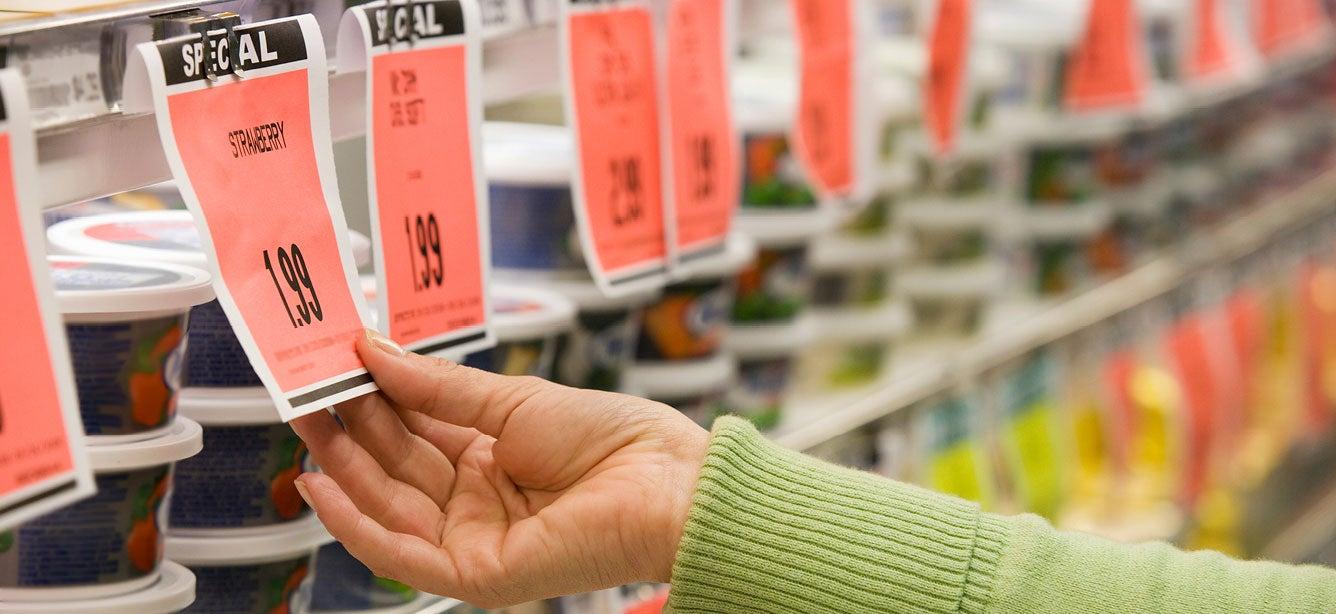
Related Topics
Picture it: you’re at the new Italian bistro in town, savoring a delicious pasta meal with a friend. When the check arrives, you reach for your wallet—only to realize you've left it at home. Your companion generously offers to cover your portion of the check and says you can pay them back later. Luckily, they don’t need to wait. You pull out your phone, open your favorite peer-to-peer (P2P) payment platform, and send the money directly to your friend with a few taps of your finger.
P2P payment platforms like Zelle, Cash App, and Venmo can be a quick and easy way to send money to someone you know at a moment’s notice, right from your mobile phone. They are ideal for everyday and emergency situations, giving recipients direct access to their money. And they’re gaining popularity: Forty percent of Americans report using P2P services at least once a month, while 18% say they use them at least once a week.1
“Digital payment platforms allow us to send money quickly without the hassle of carrying cash," said Michelle Reams, Director of Product Marketing at Zelle. "However, because of this convenience it’s important to slow down and be mindful of who you are sending money to. Much like cash, your money can be hard to get back once you have sent it."
How do digital payment platforms and apps work?
P2P payment platforms allow users to send and receive money from their mobile devices through a linked bank account, debit card, or credit card. In some cases, the sender and recipient must have U.S. bank accounts (they do not have to be from the same financial institution) and be registered with the platform being used to send money. Using digital payment platforms is very similar to handing someone cash.
There are many digital payment platforms to choose from today. These different services may have varying speeds, fees, reimbursement policies, safety measures, and other features to consider when exploring your options.
How can I stay safe when sending money using a digital payment platform?
There’s no doubt P2P payment platforms are a convenient tool in our busy lives. But it’s important to understand how to use them wisely.
Here are five tips to help you safely send money digitally:
1. Send money only to people you trust. They’re called “peer-to-peer” payment platforms for a reason—these services are best used with people you know. It’s a good idea to limit your recipients to family members, friends, and other people you trust. Why is this so important? Typically, once you send money with a P2P payment platform, the transaction can't be cancelled. If you send money to a stranger in error, it may be difficult to get it back.
2. Be aware of online scams. An online scam is when you’re tricked into authorizing a payment under false pretenses (see common payment scams targeting older adults). The payment comes at the tail end of a scammer having manipulated someone after a period of time. Some examples of online scams where users pay someone without knowing it's fraud are:
- Business imposter scams: You receive a phone call, email, text message, or private message on social media. The call or message appears to be from a familiar business—like your bank, utility company, or a well-known retailer (e.g., Amazon). Yet the sender or caller is not from a reputable organization at all. Rather, they’re a professional scammer who’s out to steal your money or your personal information.
- AI-powered scams: “One of the things we've seen is that criminals are increasingly leveraging technology, such as AI (artificial intelligence) and digital, to perpetrate scams,” said Andrea Gilman, Chief Marketing Officer at Zelle, during a panel at Age + Action 2024. “So they are turning from crimes they may have committed on the streets to digital methods of committing fraud.”
With digital tools, scammers can create believable voices, images, and videos of real people—such as your family members, employer, or even a well-known politician or celebrity. For example, you receive a call from someone claiming they’re your grandchild. They say they’re in trouble with the police and need money to get out of jail, and they ask you to send money to them. Only it’s not really your grandchild, and they aren’t in jail. But you don’t realize you’ve been tricked until your money is long gone. - Pig-butchering scams: This is a newer type of online scam that often targets older adults. Scammers typically reach out through social media, dating apps, phone, or text message. They work on gaining your trust and friendship. Then, the scammer convinces you to invest in cryptocurrency. They send you to a credible-looking online platform and persuade you to make deposits into a bogus trading account. Before you know it, you've "invested" a significant sum of money in this scheme, hoping for a sizeable return. But then your so-called friend vanishes—along with your money.
For more information, see our article on ways to avoid an online payment scam.
3. Confirm your recipient’s contact information. You want to send a family member money you owe them. You type in their mobile phone number, username, or email address; enter the amount; and hit send. But your family member claims they never received the money. You check, and realize you entered their information incorrectly and accidentally sent money to a total stranger by mistake.
Keep in mind that it’s your responsibility to make sure you have the correct contact information or username for the person you want to send money to. These tips can help you prevent erroneous payments:
- Double-check (or even triple-check!) for typos in the recipient’s email address before you hit send.
- If the payment platform you’re using offers this feature, scan a QR code to find the correct recipient. This eliminates guesswork.
- When in doubt, contact the recipient to verify their information. To be sure, you can also send a test payment of $1 to confirm that the money is going to the right place.
4. Protect your payment platform account(s). If you regularly use mobile payments, it’s essential to protect and monitor your account. A simple way to help ensure safe payments is to use a strong password (and don’t use the same password across multiple accounts/sites). These additional tips from the American Bankers Association can also help you keep your account—and your money—secure:
- Use multi-factor authentication, which requires you to have at least two credentials to access your account (e.g., your password and a numerical code).
- Don't share your account credentials with anyone, especially someone you don't know. This includes your password and any one-time verification codes you receive via text or an authentication app.
- Set up alerts in your payment platform of choice so you'll be notified of transactions even when you're not logged in.
- Review your bank accounts and the recent activity in your payment platform regularly to stay on top of any unauthorized activity. If you bank offers this option, sign up for text or email alerts that notify you of any suspicious activity on your account.
- Use public Wi-Fi with caution. Free Wi-Fi at your local cafe may seem convenient, but the connection may not be secure. When you do us this service, avoid accessing any sites or apps containing your personal information (e.g. your online banking app).
5. Understand your various payment options. Today, there are often multiple ways to pay for products and services. It’s important to check the terms and conditions of your preferred payment method. If you choose to use a P2P payment platform, you should first carefully research the protections and rules for that specific platform.
Not all transactions are suitable for using the P2P payment method. “Digital payment platforms are a great option to use with people you already know for things like splitting the cost of a takeout dinner or tickets to the local theater," Reams said. "If you need to pay someone you haven’t met before, it may be best to use a payment option that comes with more protections, like a credit card.”
Sources
1. Peer-to-Peer Payment Services. Consumer Reports Survey Group. January 10, 2023. Found on the internet at https://advocacy.consumerreports.org/wp-content/uploads/2023/01/P2P-Report-4-Surveys-2022.pdf



